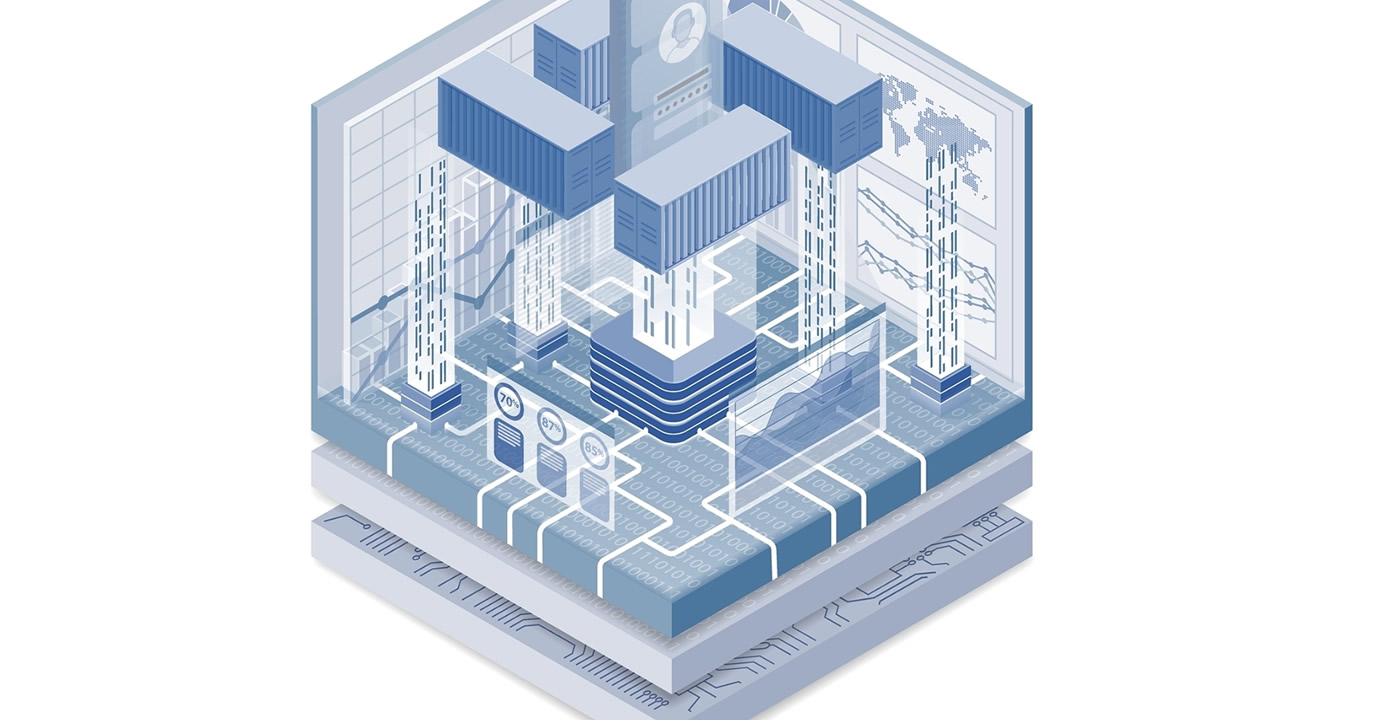
The stakes for application security have never been higher. With cyber threats constantly evolving and becoming more sophisticated, the need for robust defense mechanisms is paramount. Enter containerization—a revolutionary approach that has emerged as a game-changer for application security. Beyond merely being a development and deployment tool, containerization provides a protective cocoon, enhancing the fortitude of applications against potential threats. This article delves deep into how containerization strengthens the digital bulwarks, ensuring that applications not only perform seamlessly but also remain safeguarded from malicious entities. From understanding the foundational principle of isolation in containers to exploring real-life incidents where containerization could have turned the tide, we will embark on a comprehensive journey to spotlight how this technology is reshaping the landscape of application security. So, whether you’re a developer, a cybersecurity enthusiast, or simply curious about the future of digital safety, stay with us as we unravel the potent union of containerization and security.
 What is Containerization?
What is Containerization?
Imagine a situation where every application you wish to run comes with its own environment – carrying not just the core software but also its dependencies, configurations, and libraries. This encapsulated package is what we call a ‘container’. Containerization, therefore, is the method of packaging, distributing, and managing applications and their environments as a singular unit.
Contrasting with the Old Guard: Virtual Machines (VMs)
Traditionally, Virtual Machines (VMs) were the de facto standard for running multiple applications on a single physical machine. Each VM housed an application, its necessary tools, and a complete copy of an operating system. This setup, while effective, was bulky and resource-heavy.
Containers revolutionize this by eschewing the need for multiple OS copies. Instead, they share the host system’s OS kernel, while still encapsulating the application and its environment. This makes containers lighter, more efficient, and quicker to deploy compared to their VM counterparts.
The Perks of Going with Containers:
-
- Portability: Given that containers wrap up an application and its environment, they can run consistently across various computing environments. From a developer’s local machine to a public cloud, the behavior remains unchanged.
- Resource Efficiency: By sidestepping the need for multiple OS installations and running directly on the host system’s kernel, containers maximize hardware usage, leading to more applications running on the same hardware footprint.
- Isolated Environments: Containers ensure that each application operates within its boundary, preventing potential conflicts or vulnerabilities from spreading between applications.
- Dynamic Scalability: Containers can be swiftly scaled up or down based on demand, making them perfect for applications that experience variable loads.
The Isolation Principle in Containers
At the heart of containerization is a foundational principle that sets it apart: isolation. Much like how a sealed compartment in a ship prevents water from one section flooding the entire vessel, container isolation ensures that applications and their environments remain distinct and separate from one another.
Why Isolation Matters:
-
- Integrity and Independence: Containers operate in a manner that ensures one application’s performance or potential issues do not influence another. Even if one container faces a problem, it doesn’t ripple out and affect other containers on the same system.
- Enhanced Security: Isolation creates a barrier that safeguards containers from potential threats. If a malicious entity compromises one container, the isolation mechanism ensures that the threat remains confined, preventing it from spreading to other containers on the same host.
- Consistent Environments: With isolation, developers can be confident that the environment they use for developing and testing will remain consistent when the application is deployed. This uniformity reduces the “it works on my machine” conundrum, a frequent challenge in software development.
- Resource Allocation and Management: Containers have defined resource limits, ensuring that they use only their allocated share of system resources like CPU, memory, and I/O. This allocation ensures that no single container monopolizes the host resources, maintaining equilibrium and smooth performance for all containers.
Under the Hood: How Isolation Works:
Containers achieve this unique isolation through a combination of namespaces and control groups (cgroups). Namespaces ensure that each container has its own isolated instance of global system resources. This means that processes running inside a container can only see and affect processes within the same container.
Control groups, on the other hand, manage the allocation of resources, ensuring that each container gets its fair share and does not exceed its allocation. This dual mechanism of namespaces and cgroups ensures both the isolation and fair utilization of system resources.
Application Stability and Reliability:
One of the hidden gems of container isolation is the enhancement of application stability. Since each container remains unaffected by the actions of others, applications are less prone to unexpected behaviors or crashes. Even if one application goes haywire, it doesn’t bring down others with it. This isolated operation mode enhances the overall reliability of systems using containerized applications.
Containerization: Cultivating a Secure Application Deployment Ecosystem

Containerization is more than just a mechanism for packaging applications—it’s a comprehensive system that fosters a controlled, monitored, and secure environment for deploying applications. Here’s a closer look at how this comes to fruition:
1. Immutable Infrastructure:
Containers are typically designed to be immutable, meaning once they’re built, they don’t change. Instead of patching or updating a container, a new version is built and the old one is replaced. This approach:
-
- Reduces inconsistencies: Every deployment is consistent since it starts with a fresh container.
- Minimizes vulnerabilities: By regularly replacing containers with updated versions, potential security vulnerabilities can be addressed at the source.
2. Microservices Architecture Compatibility:
Containerization naturally complements the microservices architecture, where an application is broken down into smaller, independent services. This alignment brings:
-
- Enhanced security granularity: Each microservice, being in its container, can have security policies tailored to its specific function.
- Reduced attack surface: Even if a malicious actor compromises one microservice, the damage is contained, preventing system-wide breaches.
3. Centralized Management with Orchestration Tools:
Tools like Kubernetes provide centralized orchestration for containerized applications, ensuring:
-
- Automated security updates: With centralized management, security patches can be rolled out seamlessly across multiple containers.
- Efficient monitoring: Unusual behaviors or vulnerabilities can be detected swiftly, triggering automated responses to neutralize threats.
4. Least Privilege Principle:
Containers can be configured to operate on the ‘least privilege’ principle, where they only have the minimum permissions necessary to function. This minimizes potential damage if a container is compromised.
5. Network Segmentation:
With container orchestration platforms, it’s possible to define intricate networking rules. This allows for:
-
- Isolated communication: Containers can be set up so that they only communicate with specific containers, reducing potential pathways for malicious activities.
- Enhanced data protection: Sensitive data can be isolated in containers with particularly stringent communication rules, ensuring it’s shielded from potential breaches.
6. Continuous Integration and Continuous Deployment (CI/CD) Alignment:
The agility of containerization dovetails neatly with CI/CD pipelines. This synchronicity means:
-
- Swift vulnerability rectification: If a security flaw is detected, it can be fixed in the development phase, and a new container can be deployed rapidly, minimizing exposure.
- Regular security scanning: Containers can be scanned for vulnerabilities at every stage of the CI/CD pipeline, ensuring only secure containers reach the deployment phase.
In the intricate dance of modern software deployment, containerization stands out, not just as a method of packaging but as a comprehensive philosophy that prioritizes security at every step. Its principles, when applied judiciously, can significantly elevate the security posture of any organization.
Best Practices for Securing Containers
 Containers, while inherently secure in their design, can be further fortified by following a set of best practices. Here are some foundational steps to ensure the utmost security of containerized applications:
Containers, while inherently secure in their design, can be further fortified by following a set of best practices. Here are some foundational steps to ensure the utmost security of containerized applications:
- Regularly Update Container Images: Maintain a regular update schedule for your container images. This ensures that you benefit from the latest security patches and avoid potential vulnerabilities. Remember, an outdated container image can be a security risk.
- Implement Image Scanning: Adopt automated tools that scan container images for vulnerabilities. Such scans should be an integral part of your CI/CD pipeline, ensuring that no vulnerable images make it to production.
- Use Minimal Base Images: Instead of using bloated, generic images, opt for minimal base images that only contain the essential components your application needs. This reduces the potential attack surface.
- Control Container Capabilities: By default, containers might have more privileges than they require. Limit these by defining and assigning only the necessary capabilities, ensuring the principle of least privilege is upheld.
- Network Segmentation: Set up network policies that define which containers can communicate with others. This not only enhances performance but also limits potential vectors for malicious activities.
- Limit Resource Usage: Use control groups (cgroups) to set resource limits on containers, preventing any single container from monopolizing system resources or initiating Denial-of-Service (DoS) attacks from within.
- Use Read-Only Filesystems: Where feasible, deploy containers with read-only filesystems. This ensures that the container’s file system cannot be tampered with or written to during runtime.
- Monitor Runtime Behavior: Implement monitoring solutions that keep an eye on container behavior during runtime. Any deviation from expected behavior can be an indication of a compromise and should trigger alerts.
- Secure Container Orchestration: If you’re using orchestration tools like Kubernetes, ensure that their configurations are hardened. This includes securing API endpoints, using role-based access control (RBAC), and encrypting sensitive data.
- Regularly Audit and Review: Periodically review and audit container configurations, deployment protocols, and security policies. The landscape of security is ever-evolving, and continuous assessment ensures that you remain a step ahead of potential threats.
By proactively embracing these practices, organizations can further enhance the inherent security advantages of containerization, ensuring that their applications remain robust, resilient, and shielded from a myriad of threats.
Challenges and Limitations of Containerization
While containerization boasts an impressive array of security and operational benefits, it’s not without its challenges and limitations. Understanding these is crucial for organizations aiming to deploy containers effectively:
- Complexity in Management: The initial shift to containerization can seem daunting, especially for larger applications. Orchestrating numerous containers, each with its configurations, inter-dependencies, and communication requirements, demands a higher level of management skill and oversight.
- Persistent Data Storage: Containers are ephemeral by nature, which can pose challenges for applications requiring persistent data storage. Integrating and managing storage solutions in such transient environments necessitates strategic planning.
- Security Misconceptions: There’s a common misconception that containers are completely secure by default. While they do offer inherent security advantages, they’re not invulnerable. Relying solely on their native security without additional measures can lead to vulnerabilities.
- Overhead and Performance: While containers are lightweight compared to traditional virtual machines, running many of them simultaneously can introduce overhead. Performance optimization becomes crucial, especially when managing resources for a multitude of containers.
- Inter-container Dependencies: As applications grow and evolve, so do their inter-container dependencies. Managing these intricacies, ensuring smooth communication and operation, can become a substantial challenge.
- Vendor Lock-in Concerns: With various container tools and platforms available, there’s a risk of becoming too reliant on a specific vendor’s ecosystem. This can limit flexibility and complicate migrations in the future.
- Networking Challenges: Creating secure and efficient networking configurations for containers, especially in multi-container setups, can be intricate. It requires careful planning to ensure both security and performance.
- Evolving Ecosystem: The container ecosystem, though robust, is still evolving. This means that standards, best practices, and tooling are continually changing, which can pose adaptation challenges for organizations.
- Skill Gap: As with any emerging technology, there exists a skill gap in the market. Organizations may find it challenging to source or train professionals proficient in container management and security.
Recognizing these challenges and limitations is the first step in effectively navigating the container landscape. With informed strategies and a comprehensive understanding of both the pros and cons, organizations can harness the full potential of containerization while mitigating its associated risks.
Harnessing the Power of Containers
In the dynamic world of software deployment and development, the potential of containerization cannot be understated. As we’ve traversed its multifaceted realm, from understanding its core principles to evaluating its real-world impact, a consistent theme emerges: containerization offers a promising avenue for enhancing application security. Its holistic approach to software deployment — encapsulating applications in isolated, efficient, and easily managed units — is a formidable response to the challenges of the digital age. By integrating containers into their infrastructure, organizations can fortify their defenses against breaches, ensure more consistent application performance, and pivot rapidly in the face of emerging vulnerabilities. But as with all technological advancements, the true power of containerization lies in informed and strategic implementation. It’s a tool, and like any tool, its effectiveness is determined by the hands that wield it. As we look forward to a digital future rife with both opportunities and challenges, containerization stands as a beacon, guiding us toward more secure, scalable, and resilient application landscapes.
